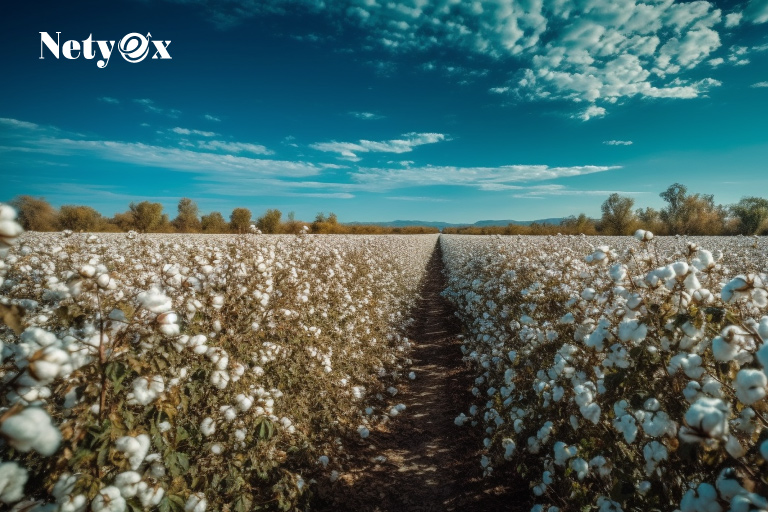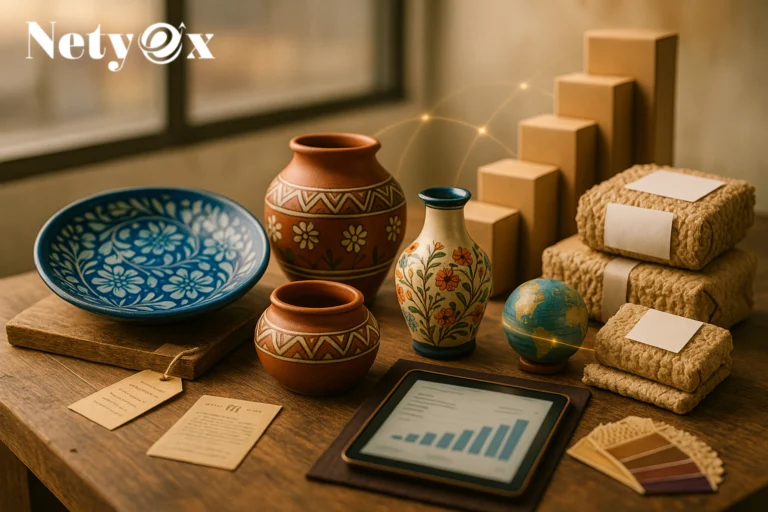Introduction to Organic Cotton and Its Global Rise
In recent years, organic cotton has emerged as a major trend in the global textile and fashion industry. Unlike conventional cotton, which relies heavily on synthetic pesticides and fertilizers, organic cotton is grown using natural processes that protect the environment, conserve resources, and improve farmer livelihoods. As consumers, brands, and policymakers demand more sustainable textile solutions, organic cotton has quickly become a symbol of ethical fashion and eco-conscious living.
The growing popularity of organic cotton reflects not just a fashion trend but a fundamental shift in global market dynamics, where sustainability, transparency, and responsibility play central roles.
What is Organic Cotton?
Definition and Key Characteristics
Organic cotton is cultivated without harmful chemicals, genetically modified seeds, or synthetic fertilizers. Instead, it uses organic farming techniques such as crop rotation, composting, and biological pest control. This ensures healthier soil, reduced water usage, and better biodiversity.
Differences Between Organic and Conventional Cotton
While conventional cotton accounts for more than 90% of the world’s supply, it comes at an environmental cost: high pesticide use, water consumption, and soil degradation. In contrast, organic cotton is safer for farmers, less resource-intensive, and better for consumers with sensitive skin.
The Evolution of Organic Cotton in Global Markets
Historical Overview
The concept of organic cotton farming began in the late 20th century as a response to the harmful effects of chemical-intensive agriculture. Initially seen as a niche product, it has gradually gained mainstream attention.
Recent Market Growth Trends
According to industry reports, the global organic cotton market has grown by over 10% annually in the last decade, fueled by demand from ethical fashion brands, eco-conscious consumers, and government regulations supporting sustainable textiles.
Why Organic Cotton is Gaining Popularity
Environmental Benefits
Organic cotton farming reduces greenhouse gas emissions by using natural fertilizers and renewable farming practices. It also conserves biodiversity and promotes healthier ecosystems.
Health and Safety Considerations
Because no toxic chemicals are used, organic cotton farming is safer for workers and communities. The final fabric is also hypoallergenic, making it ideal for babies, children, and sensitive skin.
Consumer Awareness and Ethical Fashion
A rise in consumer activism and awareness of fast fashion’s environmental footprint has pushed brands to adopt organic cotton. Companies like Patagonia, H&M Conscious, and Levi’s have integrated organic cotton into their product lines.
Global Market Statistics for Organic Cotton
Production Volumes by Country
The majority of the world’s organic cotton is grown in a handful of countries. India leads the market, contributing nearly half of the total production. Other key players include Turkey, China, Kyrgyzstan, and Tanzania. These countries have invested heavily in sustainable farming practices, often supported by non-governmental organizations and eco-conscious fashion brands.
Leading Exporters and Importers
Europe and North America remain the largest importers of organic cotton, driven by consumer demand for sustainable fashion. In contrast, Asia-Pacific countries dominate production, ensuring a steady supply to meet global needs.
Key Industry Players and Brands
Brands like Nike, Adidas, Stella McCartney, and C&A have incorporated organic cotton into their clothing lines. Certifications from organizations such as Global Organic Textile Standard (GOTS) and Organic Content Standard (OCS) further strengthen consumer trust.
Economic Impact of Organic Cotton
Benefits for Farmers
Organic cotton farming helps small-scale farmers by reducing dependency on costly chemical fertilizers and pesticides. This not only lowers input costs but also creates a safer working environment. Farmers also benefit from premium pricing due to the growing demand for organic textiles.
Pricing Trends in the Global Market
While organic cotton is more expensive to produce, it commands a 15–20% price premium in the global market. The willingness of consumers to pay higher prices reflects the growing value placed on sustainability.
Challenges in the Organic Cotton Industry
Certification and Standards
One of the biggest hurdles is the complex certification process. Farmers must adhere to strict organic standards, which require time and investment. Counterfeit certifications also pose risks to market credibility.
Supply Chain and Distribution Issues
Unlike conventional cotton, organic cotton faces logistical challenges in ensuring traceability and transparency. Many brands are now turning to blockchain and digital platforms to verify supply chains.
Market Competition with Conventional Cotton
Despite its advantages, organic cotton makes up only a small fraction of total cotton production. Conventional cotton remains cheaper and more widely available, creating stiff competition.
Regional Insights: Organic Cotton Around the World
Asia-Pacific Market
Asia dominates organic cotton production, with India and China leading the way. Strong government support and rising consumer demand are pushing adoption further.
European Demand and Regulations
Europe is at the forefront of sustainable fashion legislation. Countries like Germany, France, and the UK have strict sustainability requirements, making organic cotton a preferred choice.
North America’s Growing Adoption
In the US and Canada, eco-conscious millennials and Gen Z consumers are fueling demand. Retail giants like Target and Walmart now offer organic cotton clothing and home textiles.
Emerging Markets in Africa and Latin America
Countries like Tanzania, Uganda, and Peru are rapidly becoming key suppliers of organic cotton, driven by fertile lands, supportive NGOs, and growing export demand.
Sustainability and Organic Cotton
Role in Climate Change Mitigation
Organic cotton farming emits fewer greenhouse gases by eliminating synthetic inputs. Studies show that it can reduce carbon emissions by up to 46% compared to conventional farming.
Water and Soil Conservation Benefits
Because organic cotton farming avoids toxic chemicals, it helps maintain soil fertility and uses 91% less water. This makes it especially valuable in drought-prone regions.
Innovations and Future of Organic Cotton
Technological Advancements
New technologies like precision farming, satellite monitoring, and digital certifications are making organic cotton farming more efficient and transparent.
Integration with Circular Fashion
Organic cotton fits perfectly into the circular economy model, where fabrics are reused, recycled, and repurposed, reducing waste in the textile industry.
Consumer Trends and Preferences
Rise of Eco-Conscious Shopping
Modern consumers increasingly prefer brands that align with their values. Organic cotton appeals to those seeking ethical fashion, health benefits, and sustainability.
Influence of Social Media and Green Marketing
Platforms like Instagram and TikTok amplify eco-friendly trends. Influencers and activists are driving awareness about sustainable fabrics, making organic cotton more mainstream.
Future Outlook: The Next Decade of Organic Cotton
Market Predictions
Industry experts predict that the organic cotton market will double by 2030, with sustainable fashion becoming the norm rather than the exception.
Opportunities for Investors and Stakeholders
From green bonds to eco-fashion startups, organic cotton presents massive opportunities for investment and innovation. Businesses that embrace this shift will likely enjoy long-term growth.
FAQs on Organic Cotton
Q1: Why is organic cotton more expensive than regular cotton?
A: Organic cotton requires strict farming practices, certifications, and more manual labor, which increases costs but ensures sustainability.
Q2: Is organic cotton really better for the environment?
A: Yes, it uses less water, avoids harmful chemicals, and promotes healthier ecosystems compared to conventional cotton.
Q3: Can organic cotton be recycled?
A: Absolutely. Organic cotton is biodegradable and can be recycled into new fabrics, aligning with circular fashion principles.
Q4: Which brands use the most organic cotton?
A: Global leaders include Patagonia, H&M Conscious, C&A, Levi’s, and Adidas.
Q5: How can I know if my cotton product is truly organic?
A: Look for certifications like GOTS (Global Organic Textile Standard) or OCS (Organic Content Standard) on product labels.
Q6: Which countries produce the most organic cotton?
A: India, Turkey, China, Kyrgyzstan, and Tanzania are the top producers.
Conclusion: The Global Shift Toward Organic Cotton
The rise of organic cotton in global markets is more than a passing trend—it’s a powerful movement toward sustainability, ethics, and responsibility. From smallholder farmers in India to major fashion houses in Europe and the US, stakeholders are realizing the benefits of eco-friendly practices.
As climate change, resource scarcity, and consumer activism reshape industries, organic cotton stands out as a symbol of positive change. The coming decade will likely see organic cotton cement its place as a cornerstone of sustainable fashion and global trade.













